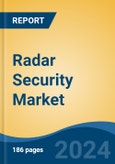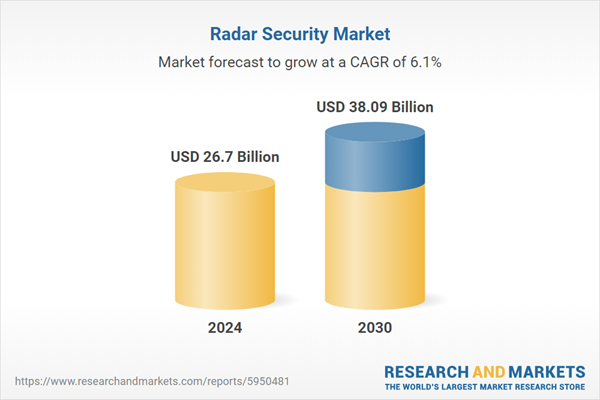Long Range is the fastest growing segment, Asia-Pacific is the largest market globally
Speak directly to the analyst to clarify any post sales queries you may have.
10% Free customizationThis report comes with 10% free customization, enabling you to add data that meets your specific business needs.
Key Market Drivers
The persistent rise in global security threats and widespread geopolitical instability represents a primary driver for the radar security market. Nations face increasing challenges, including interstate conflicts and illicit cross-border activities, demanding advanced surveillance and detection capabilities. Radar systems offer essential, continuous, and all-weather monitoring crucial for critical situational awareness across national borders, infrastructure, and strategic assets. This urgent need directly drives the demand for robust radar solutions.Key Market Challenges
The substantial capital expenditure required for the initial acquisition and subsequent maintenance of advanced radar platforms presents a significant impediment to the growth of the Global Radar Security Market. The high upfront cost acts as a considerable entry barrier for prospective buyers, especially entities operating with finite budgets or at smaller operational scales. The complex engineering and specialized components inherent in modern radar systems, covering aspects from sophisticated antenna arrays to advanced signal processing units, demand substantial investment in research, development, and manufacturing. This directly limits the number of systems that can be procured and deployed globally.Key Market Trends
The Global Radar Security Market is significantly impacted by the increasing integration of advanced AI and Machine Learning within radar systems. These technologies enhance the core capabilities of radar by enabling more sophisticated signal processing, improved target detection and classification, and a reduction in false alarms, leading to superior situational awareness. For instance, Thales introduced cortAIx in March 2024, an AI accelerator designed to expand the integration of AI technology across its sectors, including defense and security sensors like radar, to provide more precise and efficient threat identification. This advancement allows radar systems to analyze complex data streams more effectively, making them indispensable for modern security applications.Key Market Players Profiled:
- BAE Systems plc
- Hensoldt AG
- Leonardo S.p.A.
- Honeywell International Inc.
- Lockheed Martin Corporation
- L3Harris Technologies, Inc.
- Northrop Grumman Corporation
- RTX Corporation
- Israel Aerospace Industries. Ltd.
- Elbit Systems Ltd.
Report Scope:
In this report, the Global Radar Security Market has been segmented into the following categories:By Surveillance Type:
- Ground
- Air
- Marine
By Range:
- Long
- Medium
- Short
By Application:
- Border Security
- Seaport and Harbor
- Critical Infrastructure
By Region:
- North America
- Europe
- Asia Pacific
- South America
- Middle East & Africa
Competitive Landscape
Company Profiles: Detailed analysis of the major companies present in the Global Radar Security Market.Available Customizations:
With the given market data, the publisher offers customizations according to a company's specific needs. The following customization options are available for the report:- Detailed analysis and profiling of additional market players (up to five).
This product will be delivered within 1-3 business days.
Table of Contents
Companies Mentioned
- BAE Systems plc
- Hensoldt AG
- Leonardo S.p.A.
- Honeywell International Inc.
- Lockheed Martin Corporation
- L3Harris Technologies, Inc.
- Northrop Grumman Corporation
- RTX Corporation
- Israel Aerospace Industries. Ltd.
- Elbit Systems Ltd.
Table Information
| Report Attribute | Details |
|---|---|
| No. of Pages | 186 |
| Published | November 2025 |
| Forecast Period | 2024 - 2030 |
| Estimated Market Value ( USD | $ 26.7 Billion |
| Forecasted Market Value ( USD | $ 38.09 Billion |
| Compound Annual Growth Rate | 6.1% |
| Regions Covered | Global |
| No. of Companies Mentioned | 10 |









